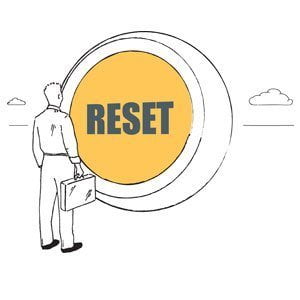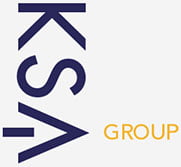Company Voluntary Arrangement (CVA)
As a professional advisor you may often be asked about the options to rescue and turnaround a struggling client. A company voluntary arrangement or CVA is a powerful tool that was introduced in 1986. The Government wanted to see more viable companies rescued and continue to trade.
A company voluntary arrangement or CVA is an insolvency procedure that allows a company to pay back a proportion of its unsecured debts over a period of 3-5 years. The proposal is voted on by the creditors and provided that 75% by value, of those that voted, support it then it becomes binding. The company is then able to continue trading under the supervision of an insolvency practitioner. Creditors cannot then enforce payment of any debts that pre-date the CVA.
This procedure is very powerful and gives the company a good chance of survival. This is especially the case if the debts are historic and underneath all the trouble there is a viable business. The moment a company proposes a CVA there is an defacto “moratorium” that puts a defensive ring around the company and stops creditors attacking it. This is backed up by case law where for instance a creditor issued a winding up petition, but it was rejected by the court on the basis that it unfairly damaged the interests of ALL creditors. That said it is not a legal protection that comes with, for instance, a notice of intention to appoint administrators, but practically is not in the creditors interests to try and wind the company up when a proposal is being put together. At KSA Group we do often get such threats from creditors but once we talk with them we can normally discourage such legal action.
The Company Voluntary Arrangement process is governed by Part 2 of the Insolvency Act 1986 and The Insolvency Rules 2016. It is one of the Government’s preferred rescue options. A CVA is an alternative to a liquidation (CVL) or an administration.
KSA Group has done 500 CVAs over the years since 2000 which means we know a thing or two about what makes a successful proposal.
When might a Company Voluntary Arrangement be appropriate?
- The company must be insolvent. You can’t just write off some debt because you don’t like it.
- The company must have a future and be profitable in day to day trading if some of its legacy debts and costs are reduced.
- The company must have some predictable and regular income. Property trading businesses for instance are not suitable.
- The company needs to have filed its tax returns and companies house reporting requirements. This indicates that the directors are organised.
- Good financial controls are vital as poor financial management makes it hard to prepare the proposal and convince creditors to support the company.
- A Strong management team is needed to see the company through the rigours of trading in a CVA
Advantages of a Company Voluntary Arrangement
- Stop pressure from HMRC tax, VAT and PAYE while the company voluntary arrangement is being prepared.
- Aggressive creditors can be stopped from taking action such as issuing winding up petitions
- Obligations related to leases, burdensome supply contracts, and employment can be terminated without any financial penalty.
- The company can terminate lease obligations and vacate premises without incurring cash costs, utilizing our expert advice. For guidance on ceasing rent and rates payments on unwanted properties, please consult our lease specialists.
- All outstanding debts to tax authorities, trade creditors, landlords, and service providers are consolidated into a single monthly payment to the supervisor, set at a manageable level.
- Employee roles can be eliminated without the need to allocate funds for redundancy payments or notice periods from the company’s cash reserves. These claims are subsequently covered by the Government following the approval of the arrangement.
- It can allow a refinancing of the company’s secured debt once it is on a more stable footing.
- Board and shareholders remain in control of the company.
- A CVA can have much lower costs than administration, a Restructuring Plan or a Scheme of Arrangement
- It is not publicly announced like administration.
- Creditors benefit from retaining customers and potentially receiving debt back over time.
Note: PAYE and VAT must be paid back up to 100p in £1 first in a CVA over years 1-4 or 1-5, before all other unsecured creditors. Trade and suppliers typically receive between 5p and 100p in every £1 of their debts, depending on the company’s ability to pay.
What is the process of putting together a Company Voluntary Arrangement?
Appoint Advisors
Hire experts like KSA Group to help with the proposal. Ensure they have experience with CVAs as they are complex and hard work! Many insolvency practitioners prefer simpler liquidation work.
Company Review
KSA Group examines the company and creates a proposal for creditors, comparing CVA, liquidation, and administration outcomes. We also build a detailed financial projection for the business. This involves questioning all financial information and estimating sales and margins conservatively. We will need lots of detailed information so if financial data is inadequate, the process is unsuitable.
Proposal Drafting Period
During this time, avoid significant changes in indebtedness, so suppliers need to be paid on time for new work. Continue normal business operations and collect money in. Typically, companies are exempt from PAYE, NIC, or VAT during the CVA proposal period. Consequently, use this time improve liquidity and cover gaps until filing in court.
However, if the process is prolonged, then the company should start paying taxes to HMRC to demonstrate the company’s viability.
Talk to Secured Creditors
Include secured creditors in the CVA plan to keep them informed and reassured about the company’s stability. KSA will update them on plans and financial adjustments. Secured creditors are not bound but if they worry about their exposure then they can appoint administrators and the directors lose control and likely their business.
Proposal Finalisation
A licensed insolvency practitioner (Nominee) reviews the draft proposal to check that it is “fit, fair and feasible”. They interview directors, discuss the plan, and inform creditors. This report is filed with the court.
Creditor Consideration
Creditors have 17-28 days to review the plan before the meeting. The Nominee’s report and CVA are available online, and notifications are sent to all creditors.
Creditors Meeting and Voting
Creditors vote on the plan. It is adopted if 75% by value of votes cast are in favour. A countback vote excluding connected creditors is taken and provided that not more than 50% of creditors voted against the proposal it is approved.
Shareholders Meeting
The proposal proceeds if creditors approve it, regardless of shareholder approval.
Approval
If both meetings agree, the chairman reports to creditors and the court. Once accepted, creditors are legally bound by the plan and cannot take legal action for past debts. New debts must be paid on time.
Payments to Creditors
The company makes agreed contributions to a trust account managed by the supervisor. Failure to pay on time can lead to liquidation or administration.
In future, if the company struggles to meet its payments but it would still appear to be viable, then a new creditors meeting can be held to ask the creditors to consider changes to the CVA itself, also known as amendments. It is generally a very good idea to inform the Supervisor early if there are any material changes to the business.
What happens at the end of the period?
Once the 3-5 years is up and the supervisor has issued a completion certificate, then the company exits the CVA. Any remaining unsecured debts are written off and the directors continue to run the business for the shareholders.
What if the creditors reject the proposal for a company voluntary arrangement?
If the vote is not carried then it is almost certain that the business will go into liquidation or administration. This is likely to lead to a lower return to unsecured creditors but if the creditors don’t support the proposal then perhaps it isn’t the appropriate course of action. It is therefore essential that you get good advice from experts before deciding on a CVA.
Can a creditor challenge a company voluntary arrangement?
Following the creditors meeting a creditor has 28 days to file a challenge to the process. If they were not aware of the proposal they have days from when they became aware. The grounds for this are the following.
- The creditor has been unfairly prejudiced by the CVA, because it has been treated differently to other unsecured creditors.
- There has been a ‘material irregularity’ in the CVA procedure. This might be vote counting and timings of notices etc.
How much does a Company Voluntary Arrangement cost?
This depends on the following;
- Total number of creditors.
- liability to secured creditors like bank lenders.
- Complexity of landlord or property issues.
- Total numbers of staff, and if any redundancies are necessary
- Legal actions and threats by creditors such as HMRC.
- The level of forecasting
- The quality of YOUR financial information and how much remedial work we may need to do.
Using a CVA the business can recover. Still there are hurdles and creative use of Hive Downs and refinancing can avoid the stigma of an insolvency process.
The directors of KSA Group have been writing company voluntary arrangements since 1995, in that time we have worked with almost every type of company with many of the common problems referred to above. This tool is useful for small, medium or large companies., it is a reasonably quick process and can be very cost effective.
Much maligned and misunderstood the CVA is great framework for recovery of a viable business, but is of course no panacea.








